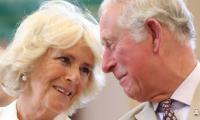KARACHI: High volatility in the currency market defined the year 2017 where the central bank apparently moved to flexible exchange rate regime to support economic growth and ease balance of payments difficulties..
The rupee was stable at an average of 104 in the interbank market throughout the first half of the year; however, it suffered its biggest one-day decline of 3.1 percent in almost four years on July 5, as it fell to 108.25/dollar from the previous closing of 104.90 in the interbank market.
An abrupt depreciation in the rupee was attributed to the exchange rate adjustment in the market. It was also aligned with economic fundamentals.
Justifying its move, the State Bank of Pakistan (SBP) said the currency depreciation was necessary to address the emerging imbalance in the external account and strengthening the growth prospects of the country.
That [currency depreciation] was not good news for the finance minister Ishaq Dar, who is on leave since late November. Dar adopted a strong rupee policy, converting the regime into an almost fixed exchange rate, one that made exports less competitive. Besides, it caused fall in remittances.
Interestingly, not the central bank, but the finance ministry intervened in the market to try to prevent the currency from further fall. The rupee/dollar parity stayed flat at 105 in almost five months.
In early December, thinking of a stable rupee looked straight forward, such was the market’s confidence that the central bank and the ministry of finance were on the same page as far as the policy and the management of the exchange rate was concerned. Investors believed that pick up in industrial output, timely completion of early harvest projects under the China-Pakistan Economic Corridor and low inflation would allow the economy to continue expanding, despite external sector challenges.
However, the policymakers at the State Bank shocked the forex market by allowing another 5.5 percent depreciation in the currency during the second week of the month.
There was no priced in for that to happen. Even with the expanding current account deficit and depleting foreign exchange reserves, the investors were not prepared for further rupee depreciation.
Since the middle of December, the rupee was trading at 110.50/dollar. The deteriorated balance of payments has been the major source of local financial market turmoil since the second half of the year.
Pakistan posted a current account deficit of $6.430 billion in five months of the current fiscal year, widening from a shortfall of $3.371 billion a year ago. The deficit stood at $12 billion in the fiscal year ended June 30, 2017.
The country’s foreign exchange reserves fell $6 billion to $18 billion between October 2016 and November 2017. The foreign exchange reserves started declining since the IMF-backed extended fund facility programme was completed in September 2016.
The forex reserves rose to $20 billion in December after the country received $2.5 billion worth of inflows from the sale of Eurobond and sukuk in the international markets.
The decline in the foreign currency reserves shows an underlying weakness in the balance of payments, as exports remained low, imports increased, and remittances remained stagnant.
The rupee is heading for a fall of six percent against the dollar this calendar year. So, will the rupee poised for a sharp rally or a big fall in 2018?
The answer depends on addressing what is ailing the currency. And, how can the government finance the nasty current account deficit?
Dr Ashfaque Hasan Khan, dean, School of Social Sciences and Humanities at NUST expects the current account gap to widen to $18 billion by the end of the current fiscal year.
“The gross external financing requirement is estimated to be around $26 billion to $27 billion, while the financing gap to be around $16 billion for the full year,” he added.
“The external debt servicing could be up to $9 billion in FY18. However, Pakistan’s foreign debt and liabilities could rise more than $90 billion.” However, the SBP’s current estimates suggest that during FY18 the financing gap is likely to be around $2.5 billion.
The imposition of regulatory duties on non-essential imports, the export package worth Rs180 billion coupled with the recent market-driven adjustment in the exchange rate would help narrow the current account deficit; thereby, reducing the gross financing need.
The newly-appointed minister of state for finance Rana Afzal Khan has said that the country is required to repay $6 billion of external liabilities before the end of FY18.
“We believe, if correct, repayment of $6 billion during the next six months is alarming, as we estimate Pakistan will need an additional $8 billion to finance its current account gap during the second half of FY18,” an analyst at JS Research said in a report.
“We estimate Pakistan's foreign exchange reserves can potentially take a hit of around $12 billion, if no other inflows / outflows are accounted for,” he added.
“We believe it will be inevitable for the newly-appointed economic team to make another foray into the bond market. However, the proposed amnesty scheme will be of critical importance in managing the balance of payments imbalances.”
Analysts have grown more downbeat about the outlook for the rupee and expect the currency to weaken further next year in case the current account deficit stays larger.
"Looks like the calm before the storm. If we're unable to capture the balance of payments deterioration, pressure on the rupee will mount, said Eman Zubair from Tresmark, a terminal that provides live market rates.
She suggests 2018 is politically an important year and we might see a temporary depreciation of five percent in the interim government’s period. However, the rupee could find some support, if coalition support fund or another Eurobond issue materialised.
The rupee will remain under pressure despite the recent depreciation, and is on course to shed a further five percent to seven percent value against the dollar by the middle of 2018; avoiding a return to the IMF during the calendar year 2018 is unlikely, according to a report published by Alfalah Securities.
The IMF has also called for a greater currency flexibility to facilitate external adjustments to support exports and economic growth. It has also said the exchange rate flexibility will be important in the period ahead.
Dr Muhammad Yaqub, former central bank governor, suggests the real effective exchange rate is still overvalued to the extent of around 12 percent to 15 percent, saying that the nominal dollar / rupee rate should be around $1=Rs120, if it has to reach its equilibrium level.
The overvaluation of the real effective exchange rate is due to two factors. “First, the rate of inflation in Pakistan has been running much higher than that of its trading partners in the last several years, necessitating that the nominal rate should depreciate to the extent of the inflation differential to maintain competitiveness of Pakistani exports,” he said.
“But the nominal exchange rate was kept stable for a long time through administrative measures and the loss of foreign exchange reserves. The focus of the policy should be on maintaining stability of the real effective exchange rate and not of the nominal exchange rate.”
Second, during the last several years the US dollar gained strength against European currencies and as nominal rupee rate is pegged to the dollar, and as it was kept stable through market intervention by the State Bank on the directives of the Ministry of Finance, the rupee also got strengthened against the European currencies in the same proportion as the US dollar.
For many analysts, currency devaluation is inflationary. It increases the cost of foreign debt servicing and interest rates. Expectations are firming for the State Bank to turn away from an easy monetary policy due to external sector difficulties.
“Following USD-PKR’s move higher, and amid a still-challenging external position, we expect the central bank to begin tightening monetary policy in early 2018. Our base case is for the first 25 basis points hike in March,” said Bilal Khan, an economist at Standard Chartered Bank.
Meanwhile, in the open market, the rupee fell 2.4 percent against the dollar in 2017, as it hovered at 111 on the last session of the year.







